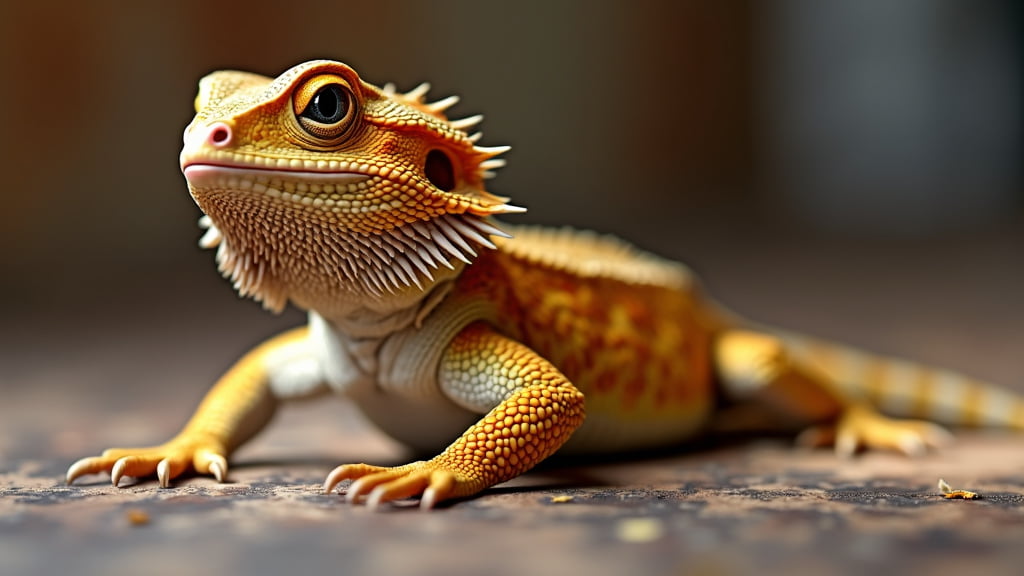Troubleshooting Heating Issues for Your Bearded Dragon
Keeping Your Scaly Friend Cosy and Safe
Owning a bearded dragon can be an incredibly rewarding experience, but it also comes with its unique set of challenges, especially when it comes to maintaining the right temperature in their habitat. Proper heating is crucial for the health and well-being of your bearded dragon. So, what do you do when you notice that your little buddy isn’t as active as usual? Or if you find that the tank temperatures are off? Let’s dive into troubleshooting heating issues for your bearded dragon to ensure they remain happy and healthy.
Common Heating Problems
Before you can fix a heating issue, you need to identify what’s going wrong. Here are some of the most common heating problems I’ve encountered:
Inconsistent Temperatures
One of the most common issues is inconsistent temperatures. Bearded dragons require a basking spot that ranges between 35-40°C (95-105°F) and a cooler area that stays between 24-29°C (75-85°F).
Causes:
- Faulty Thermostat: A malfunctioning thermostat can cause irregular temperature fluctuations.
- Incorrect Bulb Wattage: Using the wrong wattage can either overheat or underheat your tank.
- Environmental Factors: Room temperature changes throughout the day can also impact the tank’s temperature.
Solutions:
- Check Your Thermostat: Regularly ensure that your thermostat is functioning correctly. I’ve found that investing in a high-quality digital thermostat can mitigate many issues.
- Adjust Bulb Wattage: Sometimes, simply changing to a bulb with the correct wattage can solve your problem.
- Monitor Room Temperature: If your home environment fluctuates, consider moving the tank to a more stable location or using additional heating/air conditioning to stabilise the room’s temperature.
Uneven Heat Distribution
A bearded dragon’s enclosure needs a basking spot but also sufficient cool zones. Uneven heat distribution can lead to discomfort and health issues.
Causes:
- Improper Lamp Placement: Lamps not positioned correctly can result in crowded heat spots.
- Insufficient Number of Lamps: Low lamp count can lead to unevenly distributed heat.
Solutions:
- Adjust Lamp Placement: Ensure that your lamps are positioned correctly to provide a gradient of heat. I personally use an overhead basking bulb and a ceramic heater to ensure even distribution.
- Add Multiple Lamps: Adding secondary heating elements in larger tanks can help spread the heat more evenly.
Inaccurate Thermometers
Often, we rely on thermometers that are not giving us the true readings, leading to improper heating adjustments.
Causes:
- Cheap, Inaccurate Devices: Not all thermometers are made equal.
- Incorrect Placement: Where you place the thermometer matters.
Solutions:
- Invest in Quality: High-quality digital thermometers are worth the investment.
- Proper Placement: Place your thermometers in multiple spots within the tank—near the basking zone, mid-level, and the cooler end. This gives you a well-rounded understanding of the entire enclosure’s temperature.
Preventing Future Heating Issues
Routine Maintenance and Checks
Much like any other aspect of pet care, regular maintenance is crucial to preventing future heating issues.
Daily Checks:
- Temperature Readings: Take temperature readings at different times of the day and log them.
- Visual Inspection: Look out for any signs of distress in your bearded dragon that might suggest it’s too hot or too cold (like lethargy or excessive basking).
Weekly Tasks:
- Thermostat Test: Check your thermostat’s calibration.
- Equipment Inspection: Inspect all heating equipment for signs of wear or damage. I’ve found that doing this weekly prevents many sudden breakdowns.
Seasonal Adjustments
Be aware that your bearded dragon’s heating needs will vary with the change in seasons. In winter, you might need additional heating elements, while in summer, you might need to reduce them.
Winter:
- Increase Wattage: You may need higher wattage bulbs to maintain optimum tank temperatures.
- Supplemental Heating: Ceramic heat emitters are excellent for maintaining consistent temperatures.
Summer:
- Lower Wattage: You might find that switching to a lower wattage bulb keeps things more balanced.
- Tank Placement: Consider relocating the tank to a cooler part of your home if necessary.
Emergency Precautions
It’s always wise to have backup heating sources. In the event of a power cut, items like hand warmers or battery-operated heaters can be lifesavers.
Seeking Professional Help
When to Call a Vet
If you’ve been through these troubleshooting steps and your bearded dragon is still showing signs of distress, it’s critical to consult a vet. Prolonged exposure to improper temperatures can lead to severe health issues that only a professional can adequately diagnose and treat.
Signs of Trouble:
- Lethargy: Constant inactivity can signal thermal stress.
- Inappetence: Refusal to eat is another red flag.
- Discoloration: Darker colours might indicate they’re trying to absorb more heat.
Don’t hesitate to reach out to a specialised reptile vet to ensure your pet receives the best possible care.
Conclusion
Maintaining the ideal temperature for your bearded dragon isn’t merely a matter of comfort—it’s a cornerstone of their well-being. By understanding and troubleshooting common heating issues, keeping a close watch on your equipment, and preparing for seasonal changes, you can create a cosy environment tailored to their needs. Remember, when in doubt, always seek professional guidance to offer the best care for your scaly friend.
Meta Description:
“Is your bearded dragon’s tank too hot or cold? Learn how to troubleshoot and fix common heating issues to keep your scaly friend healthy and happy!”
For more comprehensive guides and expert tips, explore our Bearded Dragon Care section, or visit Reptile Safe for quality reptile heating products.
By fostering a conscientious approach to their heating needs, you’ll enjoy a long, rewarding relationship with your bearded dragon. Happy herping!

